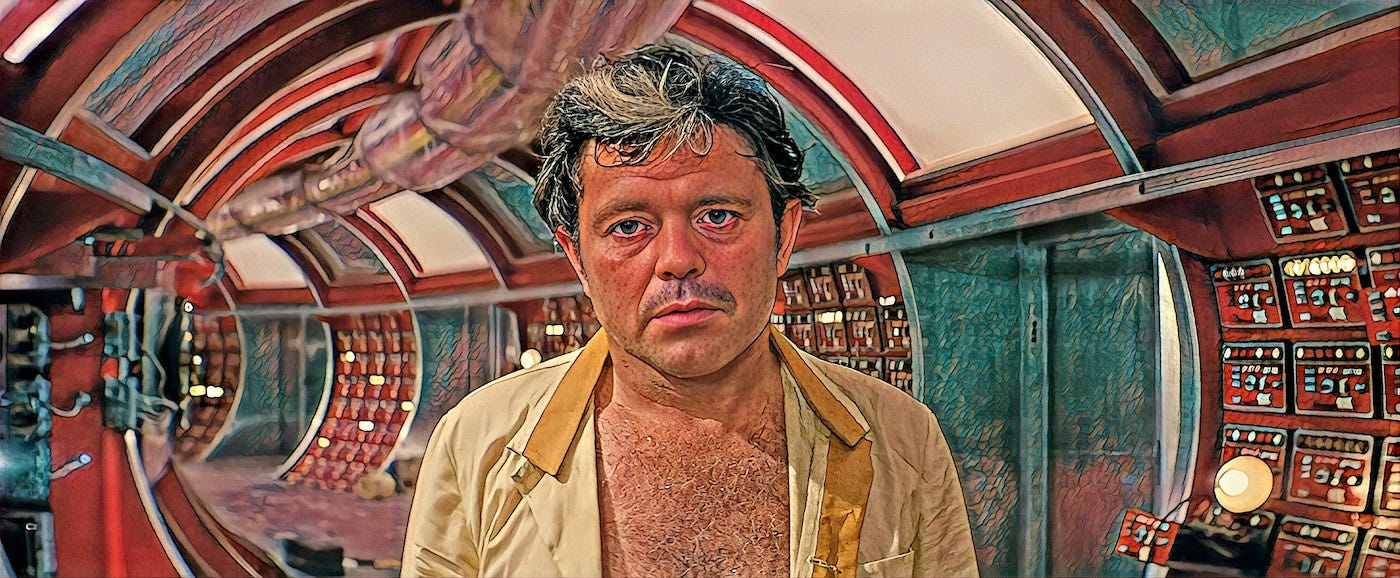By Charlie Bertsch
What makes Andrei Tarkovsky’s 1972 film Solaris remarkable are precisely those qualities that angered Stanislaw Lem, whose 1961 novel it loosely adapts.
Both the novel and film are profound meditations on the limits of reason.
But whereas Lem’s book focuses attention on the dramatically exotic intelligence of the planet Solaris, Tarkovsky situates this classic science-fiction narrative within an earthbound frame.
In the novel, we first encounter psychologist Kris Kelvin during his voyage to Solaris. Everything else occurs on or near the space station adjacent to that planet.
By contrast, the film opens with nearly forty-five minutes – almost a quarter of its total run time – of scenes set on Earth.
Kris arrives at his parents’ dacha, where he is briefed on his assignment and meets Burton, a pilot who had reported a strange experience years before while participating in a rescue mission on Solaris.
Even though Burton is a good friend of his father’s, Kris dismisses his warnings about the planet. This interaction allows us to observe that the father-son relationship is fraught.
The bucolic setting of the dacha, with trees and a pond, also contrasts sharply with the landscape of Solaris. This helps give a clearer sense of who Kris was before his journey, fleshing out the painful memories he goes on to contend with during his mission.
Lem collaborated with Tarkovsky yet was ultimately unhappy with how the screenplay shifted the story’s emotional weight away from the encounter with radical otherness.
While this decision might have made Solaris less satisfying from the standpoint of science fiction, however, it broadens the film’s allegorical potential.
From our perspective today, when rapidly worsening climate change goes hand in hand with a media ecology too damaged to address it, the planet’s sentient ocean no longer feels so speculative.
Solaris responds to the intrusive presence of the research team on the space station by conjuring simulations from their own memories.
We get fleeting glimpses of the apparitions seen by the crew members Kelvin is sent to investigate, as well as learning about the one that Burton saw. Then we witness Kris himself succumbing to this disturbing phenomenon.
In his case, the creature he sees is a dead ringer for his lover Hari, who killed herself ten years earlier. Shaken by his interactions with her, which are emphatically tactile and visual, he tricks her into a space capsule and sends her to her doom.
Yet the demise of this doppelgänger does not assuage his torment. Another Hari soon takes her place.
During a crucial scene later in the film, when the hostile Dr Sartorius tells another Hari that she is just a mechanical reproduction, she responds that she is coming to feel like a person.
For anyone familiar with Ridley Scott’s Blade Runner, the similarity between this speech and what the replicants in that 1982 film say about their condition will be immediately apparent.
The difficulty of figuring out who is an authentic human being and who isn’t retroactively undermines our certainty about the past.
The night before Kris begins his voyage to Solaris, he burns artefacts from his past. He disposes of his research notes and personal photographs, including one of Hari that seemingly resurfaces once he is on the space station.
Not only does the planet present Kris with the person he misses most in the world, over and over. It also recreates the physical evidence of her existence that he clung to after her death.
From the perspective of Lem’s novel, this is proof that the planet possesses a superior intelligence, like the sort that the crew of the various Star Trek ships periodically grapple with. But Tarkovsky clearly wants to complicate things.
No matter how hard we might try to put experiences behind us, they will continue to come at us from the future.
The alien intelligence on the distant planet Solaris is a double for the one that lives inside of us, which perpetually outwits the attempt of our conscious minds to control it.
Solaris feels newly relevant for our times because we increasingly confront a world in which our simulations of our memories are repeatedly conjured by technology that exists independently of individual consciousness.
Put another way, no matter how badly we might want to make material uploaded to the cloud disappear, it keeps returning like the repressed content of psychoanalysis.
The “memories” with which Facebook confronts us are the proverbial tip of the iceberg, the small portion of this external repository of our humanity, which can loom out of the darkness at any moment.
Our awareness that this content is always out there, as both lure and threat, decentres us. Its sheer objective quantity puts the scope of our subjectivities to shame.
When we combine that realisation with the perception that Earth itself is behaving like the sentient ocean of Solaris, tormenting us as retaliation for our destructive intrusions, it seems Tarkovsky’s film itself was sent from a future whose presence now surrounds us.
Maybe that’s why the audiences who had a chance to see Solaris in the 1970s found it so alienating.
Screenshot courtesy of Wasfi Akab. Published under a Creative Commons license.





... and of course HBO's greatly extended and expanded take on Westworld, which sadly got canned before it was to go internal and fully incorporeal. Too real for us corporeals perhaps?